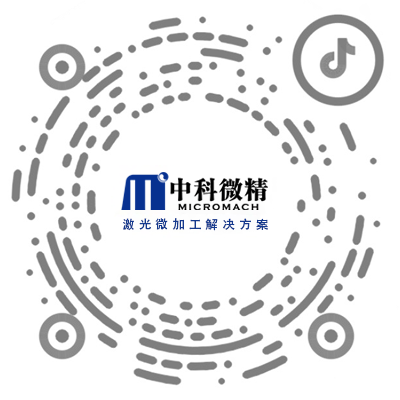In recent years, Shaanxi has achieved gratifying results in building an innovative province. However, being a large province in science and education does not equate to being a strong province in innovation. The pain points in the industrial chain and the blockages in the innovation chain remain the difficult problems that need to be solved urgently. Only by ensuring smoothness can we avoid pain; only by unblocking can we avoid blockages. It is essential to deploy the innovation chain around the industrial chain and to layout the industrial chain around the innovation chain.
In the opening year of the "14th Five-Year Plan," Shaanxi has accumulated the efforts of continuously promoting the reform of coordinated scientific and technological resources for ten years and has pooled the strength of the whole province to build an innovation consortium. This action promotes the precise matching and efficient coupling of innovation elements. The "two-chain" integration action, with the innovation consortium as the "reactor," has added new momentum for catching up and surpassing.
Higher starting point and clearer direction –
Collaboratively solving "bottleneck" problems
Not long ago, the construction of the "Qin Chuang Yuan" innovation-driven platform, hailed as Shaanxi's main engine for innovation, was launched at the China Western Science and Technology Innovation Harbor. On that day, four innovation consortia jointly established by several leading enterprises and universities attracted much attention. Shaanxi Provincial Party Committee Secretary Liu Guozhong expressed Shaanxi's determination and confidence to break the situation with an upgraded version of innovation-driven new momentum by "exerting the Shaanxi people's spirit of daring to explore and being good at innovation."
Promoting the establishment of innovation consortia is a breakthrough for Shaanxi to implement the innovation-driven development strategy in accordance with the central spirit and an important approach to high-quality development based on the provincial conditions. A person in charge of the Shaanxi Provincial Department of Science and Technology told reporters that energy chemicals, photonics, and seed projects are Shaanxi's advantageous industries. However, after sorting out the "inventory" of science and technology, it was found that there are still many weak links and bottlenecks in the industrial chain. Some key core technologies in the innovation chain are subject to others and have a low conversion rate. It is necessary to quickly make up for the shortcomings of "bottlenecks."
Take the machine tool industry as an example. There is a "low-end melee and high-end loss" situation, and the ability for independent innovation and core competitiveness of the industry is insufficient. In order to break through the dilemma, Qin Chuan Machine Tool and Tool Group Co., Ltd. has recently taken the lead in establishing a high-end numerical control machine tool innovation consortium, jointly with 12 enterprises including Wuhan Huazhong Numerical Control and three universities including Xi'an Jiaotong University, to jointly develop high-precision and efficient numerical control machine tool hosts and core functional components, as well as high-end numerical control systems.
Compared with traditional forms of collaborative innovation organizations such as industrial alliances, the newly launched innovation consortia have a higher starting point, clearer direction, and a closer market-oriented interest mechanism. Led by backbone enterprises with strong capabilities in integrating technological innovation resources, they are jointly established with at least 10 universities, research institutes, and upstream and downstream enterprises in the industrial chain. The goal is to solve key core technology problems that restrict industrial development and undertake major scientific and technological projects. Innovation consortia emphasize systematization and task orientation, making the connection between academia and industry tighter and helping to continuously advance major goals.
The cell membrane chromatography technology, which was independently developed by the National and Local Joint Engineering Research Center for Natural Vascular Drug Screening and Analysis at the School of Medicine of Xi'an Jiaotong University, can be widely applied in the fields of drug research and development and production, and is expected to break the long-term dependence on imports of pharmaceutical analysis equipment in China. However, the transformation of scientific and technological achievements is not easy. Han Shengli, an associate professor and doctoral supervisor of the college, said: "We are good at scientific research and teaching, but our ability and energy to expand the market and develop products are limited." The mechanism and platform of the innovation consortium have built an efficient "greenhouse" for scientific and technological achievements to bear "rich fruits." The base for cooperation between industry, academia, and research has been built in the Western Science and Technology Innovation Harbor where the center is located. With the help of market forces, the "last mile" of industrialization has been unblocked. It is reported that an online two-dimensional chromatographic analyzer, which has been preliminarily shaped through multi-party collaboration, is expected to be mass-produced after trial use and adjustment.
Focus on application and target the market –
Recreating the "adhesive" of science and technology and economy
Zhao Wei, who has been engaged in research and development for nearly 40 years and is now the director of the Xi'an Branch of the Chinese Academy of Sciences, already has silver hair all over his head. In his view, China is often "bottlenecked" in the field of new materials, and breakthroughs in the field of photonics are expected to change this situation. "Shaanxi has advantages in photonic technology, but the photonic industry chain is not long or strong. Innovation consortia are conducive to supplementing, strengthening, and extending the chain."
In order to seize the opportunity of the high-speed growth of the photonic industry, Shaanxi is brewing a "Chasing Light Plan," proposing to initially form a photonic industry cluster integrating listed companies, little giant companies, andStart-upcompanies by 2023; by 2026, initially form three hundred billion-level photonic industry clusters, and create a global highland for original innovation of photonic technology, the main battlefield for the development of China's photonic industry, and a globally influential highland for the photonic industry ecosystem.
Xi'an Zhongke Weijing Photonics Manufacturing Technology Co., Ltd. is committed to ultrafast laser high-end precision manufacturing equipment. When reporters visited this company, they saw that the grating thin film of the hard X-ray imaging instrument, which is only as large as a mineral water bottle cap, was covered with dense parallel lines. Kang Jing, the head of the company's Science and Technology Development Department, put it under a digital microscope and explained, "There are more than 20,000 such 'lines,' and the spacing is finer than a hair." Kang Jing said that the company's ultrafast laser "cold processing" technology is comparable to embroidery skills. It has broken through the micro-meter level pitch cutting problem and has been applied to the development of China's first advanced space-based solar observation satellite. This is thanks to the in-depth integration and development model of industry, academia, and research formed by the company with Xi'an Institute of Optics and Precision Mechanics and other units. More than 20 key technologies have been broken through first, solving the "bottleneck" problem of precision manufacturing of complex microstructures of three-dimensional components.
"The integration of the 'two chains' is ultimately to enhance the value chain. We need to couple the strength of scientists, engineers, entrepreneurs, and capital and industry, making them a close community of life and career," said Liu Yubin, a member of the Working Committee of the Xixian New Area and the Party Secretary and Director of the Management Committee of Fengxi New City.
Each takes what is needed and each displays its strengths –
Making the innovation consortium a community of interests
Although the innovation consortia in Shaanxi Province are guided and promoted by the government, the fundamental driving force comes from the market. The government does not force "arranged marriages," but uses market mechanisms as a link to let the innovation consortia spontaneously become a community of interests. Enterprises become the main body of innovation, and the innovation units on the industrial chain can each take what is needed and display their strengths.
The Soaring Town, jointly built by Northwestern Polytechnical University and the National Xixian New Area, is China's first innovation demonstration town with the core of "air-space-ground-sea" intelligent unmanned system industry, realizing government guidance, university construction, enterprise as the main body, and market-oriented operation. Wang Han, from the Administrative Department of Soaring Town, introduced that in the future, an intelligent unmanned system industry cluster covering upstream, midstream, and downstream will be formed here, and it is planned to attract 1,000 science and technology innovation enterprises to settle in during the "14th Five-Year Plan" period.
Focusing on the interaction and docking of the industrial chain and the innovation chain, Shaanxi starts from the innovation mechanism, deepens and expands the service chain, and makes it clear that innovation consortia can be entrusted to undertake major provincial scientific and technological projects; priority recognition of entrepreneurial and innovative carriers within the innovation consortium as provincial makerspaces and incubators; and encourages venture capital funds to support the transformation of scientific and technological achievements by innovation consortia. It is expected that by 2023, about 30 innovation consortia will be established around "bottleneck" technologies that restrict industrial development and key common technologies of the industry.
Shaanxi Provincial Party Committee Deputy Secretary and Governor Zhao Yide said that it is necessary to further adhere to the core position of innovation, implement the strategy of strengthening the province with talents, strengthen innovation platforms, share innovation resources, and effectively solve the problem of "two separate skins" between the industrial chain and the innovation chain, science and technology and the economy, and show the strength of a large province in science and education in the


 WeChat official account
WeChat official account
 Tiktok
Tiktok
 Video Number
Video Number